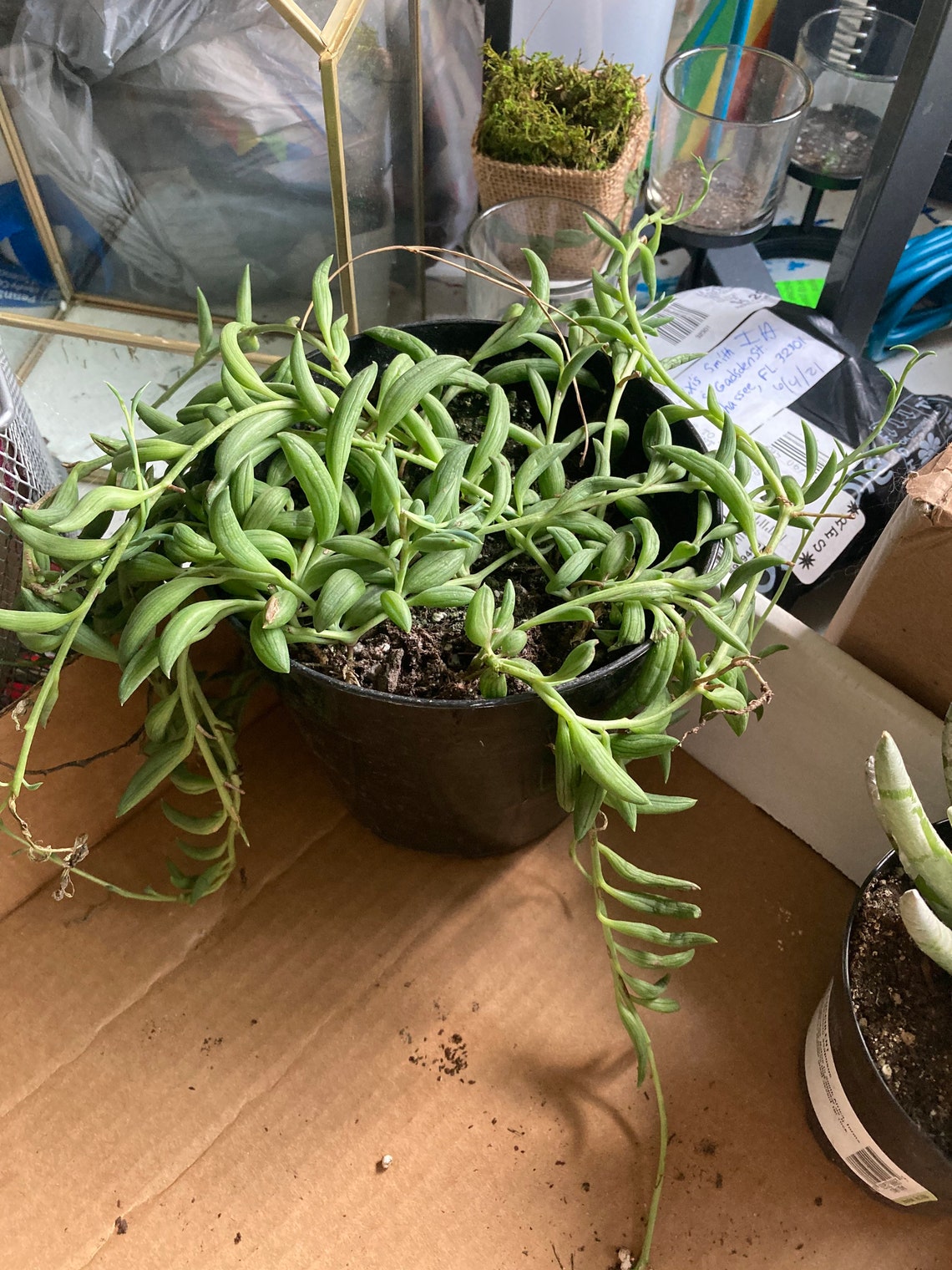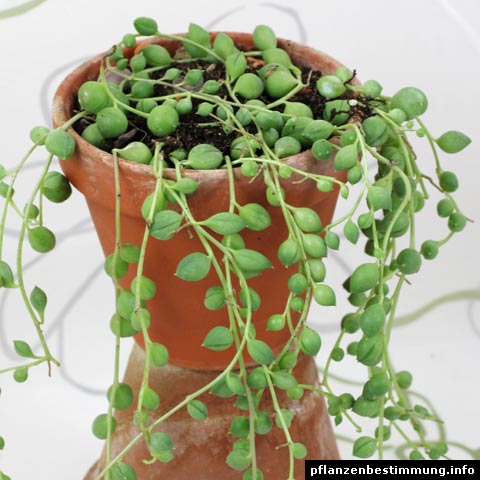

This variety is easy to re-root from stem cuttings. Water deeply enough for water to run out the drainage hole, then wait for the soil to fully dry before watering again. Pick containers with drainage holes and use well-draining cactus and succulent soil with 50% to 70% mineral grit such as coarse sand, pumice, or perlite. They need ample sunlight, great drainage, and infrequent water to prevent rot. Soft succulents will not survive a hard frost, but if there is a risk of freezing temperatures they can be brought indoors to grow on a sunny window sill or under a grow light.

They also have a light coating of powdery farina (epicuticular wax). The leaves have narrow, translucent stripes or " leaf windows" that allow sunlight to irradiate the leaf interior. This fast grower looks particularly striking in hanging pots. These plants are toxic if ingested by animals and humans.Blue Pickle Vine (aka Fishhooks Senecio) (now Curio radicans 'Glauca'): Trailing stems of pickle-shaped, blue-green leaves.Repot every two or three years, moving it to a pot just 2 inches wider. This plant grows and blooms best when somewhat rootbound.Maintenance (pruning, legginess, repotting) Root rot may occur if this plant is overwatered.Remove pests with a cotton ball or q-tip soaked in rubbing alcohol, or treat the plant with diluted neem oil. Scale, mealybugs, and aphids are not common but may occur.These plants can be easily propagated by stem or leaf cuttings.Apply a water-soluble, balanced fertilizer monthly, diluted at half strength. These plants do not require fertilizer though it can be added to give container grown plants a boost or to supplement poor soil.Expect the tiny white blooms to blossom in late winter or early spring. Flowers are small and cinnamon-scented.

You can increase aeration and drainage by amending with sand, pumice, or perlite up to 50%. A typical cactus potting soil amended will work. Give Senecio radicans a light, gritty arid plant soil.Overwatering could lead to leaf drop or root rot.Reduce the frequency of watering to about half of what you would provide in the summer. In the winter, when these plants are not actively growing, ease up on watering.Make sure to drench the soil thoroughly until water is dripping from the bottom of the plant. Water once the soil dries out to 2 inches below the surface.Senecio radicans are sub-tropical plants, meaning they thrive in temperatures between 65 to 80 ✯.Leaf drop may be a sign that this plant is not getting enough sunlight.The diffused light of a screen door or sheer curtain will be perfect. However, when it’s hot, these plants prefer partial shade at peak hours. It has multiple tendrils of glossy, banana-shaped foliage. A member of the family Asteraceae, the asters, this species is closely related to the common string of pearls and Curio hallianus. Provide southern exposure as much as possible. Curio radicans Species: radicans (RAD-ee-kans) (Info) Synonym: Senecio radicans Water Requirements: Requires consistently moist soil do not let dry out. Senecio radicans, is a succulent houseplant that is native to South Africa. Senecio radicans love plenty of direct sunlight.In late winter or early spring, expect flourishing plants to blossom with tiny, cinnamon-scented flowers. Native to the Cape Province of South Africa, this plant can be found trailing across arid sandy ground and dangling off of coastal cliffsides. Senecio radicans is a dramatic, cascading succulent with long trails of crescent-shaped leaves. Common Name - String of Fishhooks or String of Bananas


 0 kommentar(er)
0 kommentar(er)
